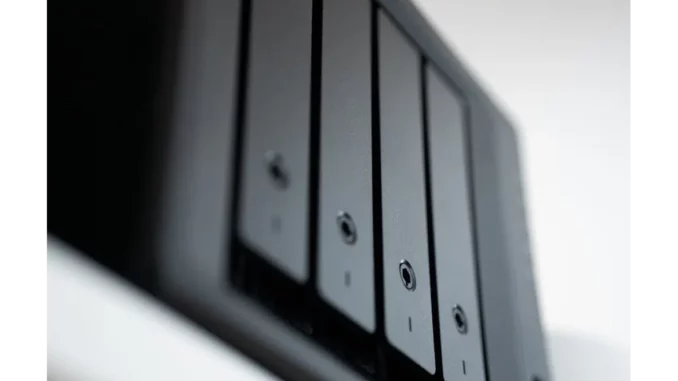
Summary
Strengthening Data Security: Essential Measures for Synology NAS Owners
As digital threats become increasingly sophisticated, safeguarding personal and professional data is of paramount importance. For users of Synology Network Attached Storage (NAS), implementing robust security protocols is crucial to protecting sensitive information. This article outlines key strategies for enhancing the security of Synology NAS devices, drawing on expert insights and practical steps.
Main Article
In today’s digital landscape, ensuring the security of your data is not just advisable but essential. Synology NAS devices offer users a high degree of control over their data storage solutions, but with this control comes the obligation to secure the system against potential threats. As cyber-attacks become more prevalent, proactive measures are necessary to protect valuable information.
Disabling Default Admin Account
One of the foundational steps in safeguarding your Synology NAS is disabling the default admin account. As David Lin, a cybersecurity specialist, notes, “The default admin account is a well-known entry point for hackers. By disabling it and creating a new user with admin rights, you significantly bolster your system’s defences.” This simple change can be executed through the Control Panel under User & Group settings, effectively closing a common security loophole.
Crafting Strong Passwords
The importance of a robust password cannot be overstated. A strong password should be lengthy and include a combination of uppercase and lowercase letters, numbers, and symbols. Avoid using easily guessed words or phrases. As technology journalist Emma Patel advises, “Utilising a password manager can help generate and securely store complex passwords, ensuring they remain inaccessible to unauthorised users.” Regularly updating passwords further reduces the risk of unauthorised access.
Securing Connections with HTTPS and SSL Certificates
When accessing your Synology NAS over the internet, using HTTPS is critical to encrypt data and prevent interception. Synology provides a complimentary SSL certificate through Let’s Encrypt, easily configured via the Control Panel under Security settings. This encryption layer is particularly important for those who access their NAS remotely, safeguarding data from prying eyes.
Implementing Two-Factor Authentication (2FA)
Two-Factor Authentication (2FA) offers an additional layer of security, making unauthorised access significantly more challenging. Synology’s DSM supports 2FA, which can be activated through account settings. “2FA adds a robust barrier against intruders,” says cybersecurity analyst Alex Grant. “Requiring a secondary verification method, like a code sent to your device, ensures that even if a password is compromised, access is not granted.”
Utilising Synology’s Security Advisor
Synology’s Security Advisor is an invaluable tool for identifying vulnerabilities within your NAS. By regularly scanning your device, it highlights potential weaknesses such as outdated software or weak passwords, allowing you to take corrective action swiftly. Engaging with this tool on a routine basis helps maintain a secure environment for your data.
Setting Up Surveillance and Monitoring
For those concerned about physical security, Synology’s Surveillance Station offers a solution. This application allows integration with IP cameras, enabling you to monitor and record activities around your NAS device. While this may appear excessive, it provides peace of mind by ensuring that your NAS remains physically secure.
Employing an IP Block List
Configuring an IP Block List can effectively thwart unauthorised access attempts by blocking known malicious IP addresses. By regularly updating this list, you can protect your NAS from emerging threats, particularly those posed by brute force attacks. This feature is managed through the Firewall settings in the Control Panel.
Regular Software Updates
Keeping your DSM and its packages updated is crucial for maintaining security. Software updates typically include patches for newly discovered vulnerabilities. Enabling automatic updates ensures your NAS is safeguarded against the latest threats, keeping your data secure.
Detailed Analysis
The measures outlined for securing Synology NAS devices reflect broader cybersecurity trends, where proactive defence strategies are crucial in combating evolving digital threats. As data becomes increasingly central to both personal and professional spheres, protecting it from unauthorised access and cyber-attacks is imperative. The implementation of robust security protocols—such as disabling default accounts, using strong passwords, and employing 2FA—aligns with best practices advocated by cybersecurity experts. The emphasis on regular software updates and utilising built-in security tools like Synology’s Security Advisor underscores the importance of staying current with technological advancements to fortify defences against potential breaches.
Further Development
As the landscape of digital security continues to evolve, Synology NAS users should remain vigilant and informed about emerging threats and new security features. Future updates from Synology may introduce enhanced security measures, further simplifying the process of safeguarding your data. Readers are encouraged to stay engaged with ongoing coverage of cybersecurity trends and Synology’s developments, ensuring their systems remain resilient against the ever-changing threat landscape.

